During a window of dry weather beginning on June 2, crews were able to get out into King Estate’s Biodynamic vineyard and plant new Pinot Noir vines in block 22a. Throughout the month more planting followed in blocks 19d and 9a, wrapping up on June 29.
Blocks 22a and 19d are located not far apart from one another in the northern part of the King Estate vineyard; 9a lies along the roadway between the entrance gate and the Bistro on the left-hand side of the road.
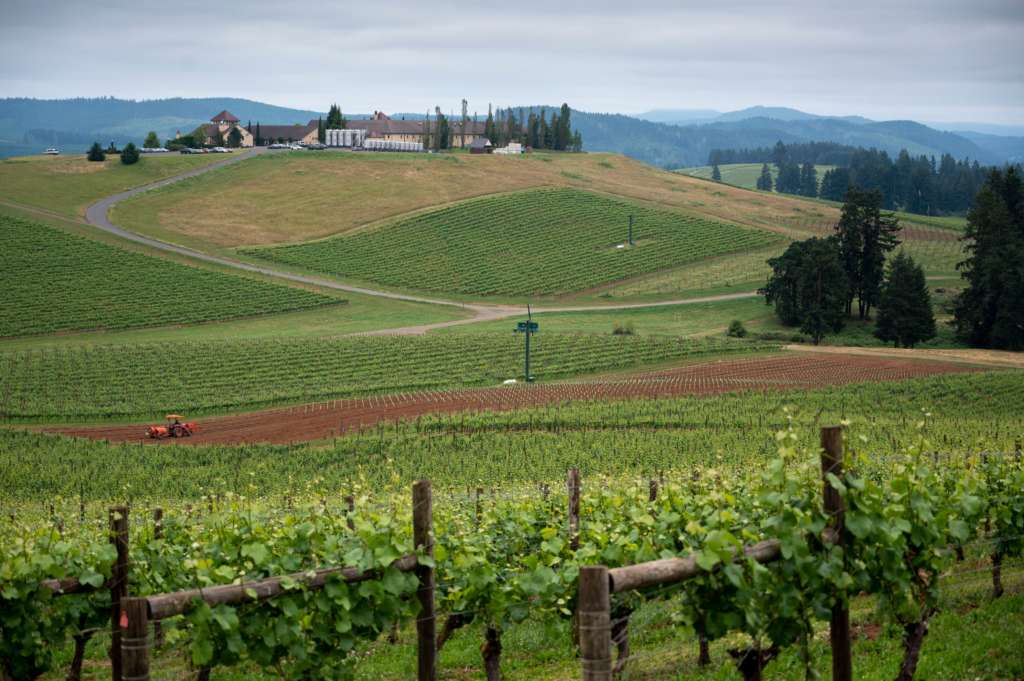
The new plantings added about 10 acres of Pinot Noir to the estate vineyard, bringing the total Pinot Noir planted to nearly 167 acres. Tearing out old vines and replanting new ones happens continuously at King Estate, keeping the number of acres planted with Pinot Noir fairly consistent over the years.
Nurturing new vines
King Estate Vineyard Manager Meliton Martinez explains that the vine rows are spaced eight feet apart. Along each row, vines are planted five feet apart. After the vines are planted, crews put in training stakes next to the vines to hold a growing tube and support the vines’ new growth. The first fruit from these vines is expected to be harvested in 2025 although it won’t likely be used to make wine until the 2026 vintage or later.
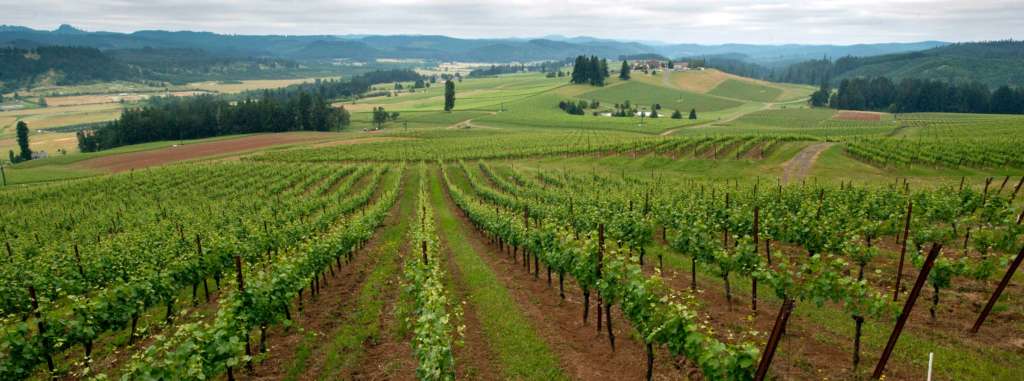
King Estate Block 22a
Block 22a is a six-acre site that was previously planted as an experimental block alternating Pinot Noir with Pinot Gris in the row. The block utilized a high wire trellis system known as Geneva Double Curtain, or GDC, with two wires running parallel on either side of a single row of grapes. Pinot Noir was trained to one side and Pinot Gris to the other. The block never quite lived up to expectations and the vines were removed in 2020.
Dijon clones
This year we planted four acres of clone 777 and two acres of clone 667 in block 22a. While both clones are popular in Oregon, 777 is slightly more commonly planted. Both are part of the Dijon family of clones that were introduced in Oregon in 1987-88 by pioneering winemaker David Adelsheim. According to a 2010 article in the newsletter PinotFile, Adelsheim and OSU professor David Heatherbell persuaded Dr. Raymond Bernard of the University of Dijon in Burgundy, France, to share some of his clones with them. The cuttings arrived with a return address of Dijon and the name stuck.
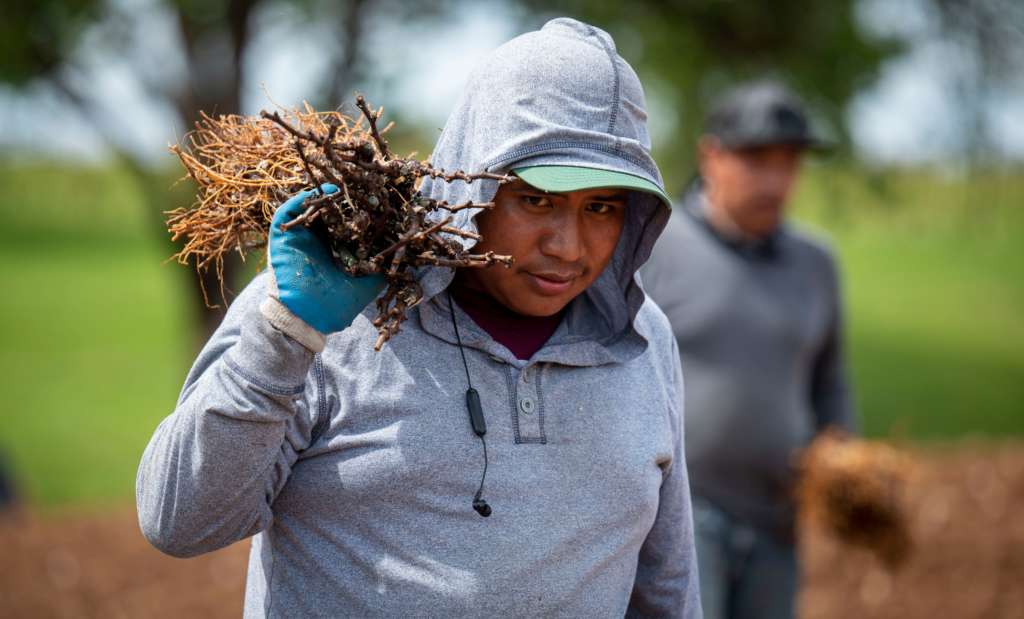
Clone 777 is an earlier ripening clone with smaller clusters and berries that grows well in our vineyard. King Estate’s winemakers are partial to the quality of wine that this clone produces. The grape is known for its pleasing aromatics, dark-colored grape skins and fruit-forward flavors, resulting in a wine that balances finesse and power.
Clone 667 is a more traditional ripening grape – neither early nor late – and features larger clusters with small berries that impart a rich, intense color. This versatile grape is popular with our winemakers. It has been called a workhorse clone, known for aromatics and fine tannic structure.
King Estate Block 19d
Block 19d was planted with 1.66 acres of Pinot Noir clone 943. This block was previously planted with Pinot Noir but in 2014 the vines were pulled out and partially replaced. This latest planting completes the job. According to King Estate Director of Vititculture Ray Nuclo, vineyard managers typically don’t like 943 because of low yields, but winemakers love it. With its loose clusters and smaller berries, clone 943 is known for its concentration of flavors and atypical aromas. Uncommon in Oregon but growing in popularity, this is the first clone 943 to be planted at King Estate.
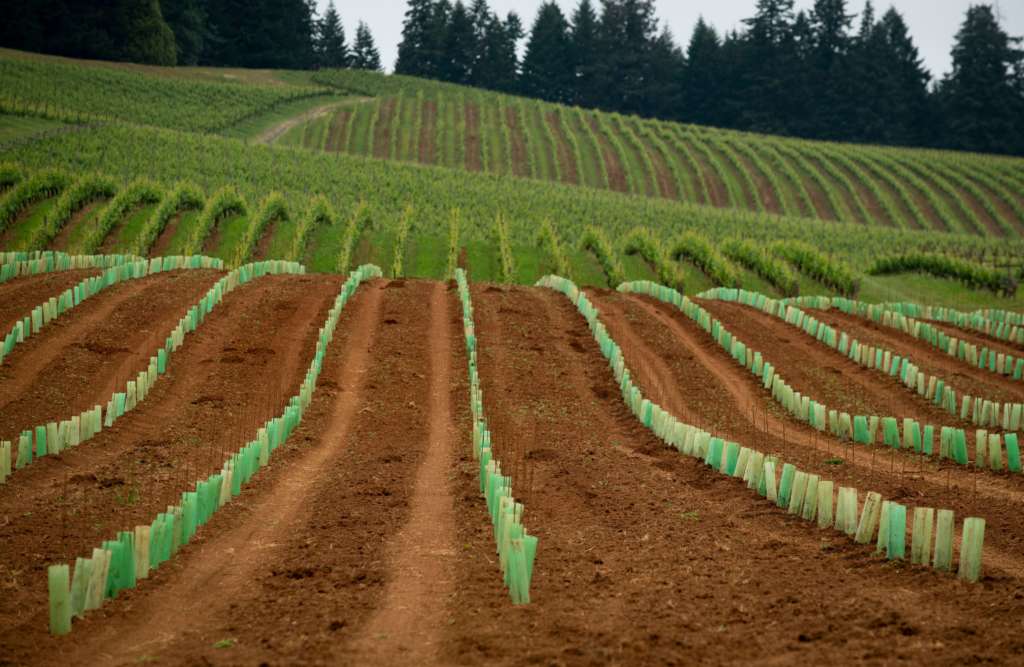
King Estate Block 9a
Block 9a was the last block to be planted, adding another 1.4 acres of Pinot Noir to the estate. This block was planted with the Mount Eden clone. Two acres of Mount Eden were planted three years ago in nearby block 9, which is King Estate’s old rootstock block. Those vines are too young to have produced any fruit yet.
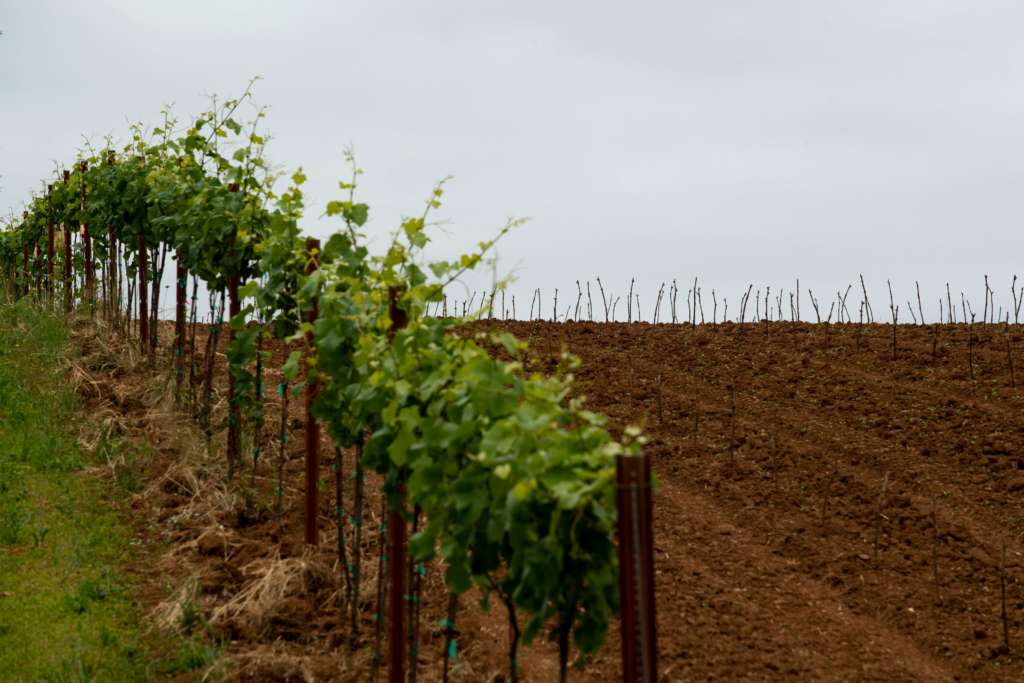
Mount Eden clone
Named for a vineyard in the Santa Cruz Mountains about 50 miles south of San Francisco, the Mount Eden clone was first planted there in 1945 with cuttings taken from nearby La Cresta Vineyard, which was founded by renowned California wine pioneer Paul Masson in 1905. While the lineage is murky, historians speculate that the clone originated in a Burgundian vineyard owned by Louis Latour, a good friend of Masson, and arrived in California in the 1880s. Prized for its small berries and aromatic intensity, wine from the Mount Eden grape can stand on its own without blending.
Anticipation
Patience is a required virtue of vintners everywhere but by 2026 or so, fruit from these new vines should find its way into a King Estate bottle for you to enjoy – the following year!
